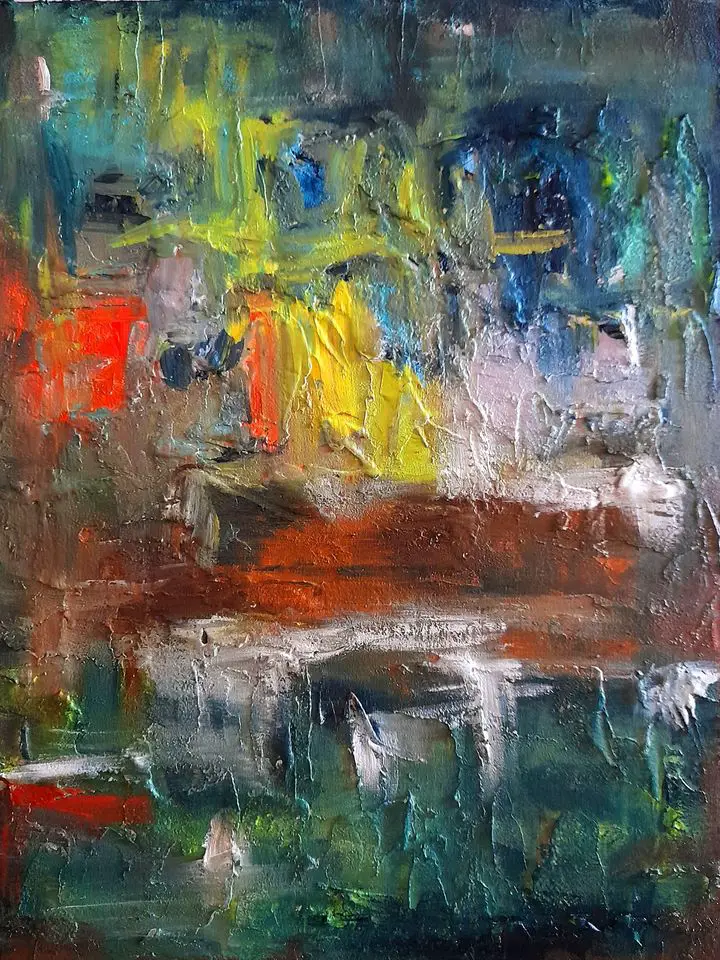Overview
Introduction to famous artworks
Famous artworks have always captivated the imagination of art enthusiasts and historians alike. These masterpieces, created by renowned artists throughout history, hold a certain allure that transcends time and cultural boundaries. From the enigmatic smile of Leonardo da Vinci’s Mona Lisa to the vibrant brushstrokes of Vincent van Gogh’s Starry Night, each famous artwork tells a unique story and leaves a lasting impression. In this article, we will delve into the secrets and mysteries behind these iconic masterpieces, shedding light on the techniques, symbolism, and historical context that contribute to their enduring appeal. Join us on this fascinating journey as we unveil the hidden treasures of famous artworks and gain a deeper understanding of their significance in the world of art.
Importance of understanding the secrets behind masterpieces
The Secrets of Famous Artworks: Unveiling the Mysteries Behind Masterpieces is an article that delves into the significance of understanding the secrets behind renowned artworks. It emphasizes the importance of unraveling the hidden meanings, techniques, and inspirations behind masterpieces created by famous artists throughout history. By gaining insight into these secrets, art enthusiasts and scholars can develop a deeper appreciation for the artwork and the artist’s creative process. Furthermore, understanding the secrets behind masterpieces allows us to connect with the artist on a more profound level, enabling us to grasp the historical, cultural, and personal contexts that influenced the creation of these iconic artworks. This knowledge not only enriches our understanding of art but also enhances our ability to interpret and analyze artworks, fostering a more informed and nuanced appreciation of the artistic world.
Overview of the article
The Secrets of Famous Artworks: Unveiling the Mysteries Behind Masterpieces is a captivating article that delves into the hidden stories and enigmatic elements of renowned artworks. This article aims to shed light on the fascinating secrets that lie within these masterpieces, offering readers a unique perspective on the artistic world. Through meticulous research and analysis, the article reveals the untold narratives and symbolism behind each artwork, providing a deeper understanding of the artist’s intentions and the historical context in which they were created. With its engaging narrative and thought-provoking insights, this article is sure to captivate art enthusiasts and ignite their curiosity.
The Mona Lisa: Unraveling the Enigma

The mysterious smile of Mona Lisa
The enigmatic smile of Mona Lisa has captivated art enthusiasts and scholars for centuries. Painted by Leonardo da Vinci in the early 16th century, this iconic masterpiece continues to intrigue and fascinate people from all around the world. The secret behind Mona Lisa’s smile remains a subject of debate and speculation, with various theories suggesting different interpretations. Some believe that the smile is a reflection of the artist’s own emotions, while others propose that it represents a hidden message or symbol. Regardless of the true meaning, the Mona Lisa’s smile is undoubtedly one of the most recognizable and mysterious expressions in art history.
Leonardo da Vinci’s techniques and innovations
Leonardo da Vinci, the renowned Italian artist and inventor, was not only a master of painting but also a pioneer in various techniques and innovations. His artworks, such as the Mona Lisa and The Last Supper, continue to captivate audiences around the world. One of the most intriguing aspects of da Vinci’s work is the intriguing hidden history behind each masterpiece. Through meticulous research and analysis, art historians have uncovered fascinating secrets and symbols hidden within his paintings. These hidden elements add an extra layer of depth and mystery to da Vinci’s already remarkable artworks. By studying da Vinci’s techniques and innovations, we gain insight into the mind of a true genius and appreciate the level of detail and thought that went into each brushstroke.
Controversies surrounding the identity of the subject
One of the most intriguing aspects of famous artworks is the controversies surrounding the identity of the subject. Throughout history, many renowned paintings have sparked debates and speculation about who the person depicted in the artwork truly is. These controversies add an extra layer of mystery and fascination to the masterpieces, as art enthusiasts and experts delve into historical records, analyze facial features, and interpret symbolism to uncover the truth. From the enigmatic Mona Lisa, whose identity has been the subject of countless theories, to the disputed figures in Rembrandt’s paintings, such as the mysterious ‘Girl with a Pearl Earring,’ these controversies ignite discussions and ignite the imagination of art lovers around the world. Unveiling the mysteries behind the subjects of famous artworks not only sheds light on the personal stories behind the masterpieces but also allows us to gain a deeper understanding of the artist’s intentions and the cultural context in which these works were created.
The Starry Night: Van Gogh’s Emotional Journey

Depicting Van Gogh’s mental state
Vincent Van Gogh, one of the most renowned artists in history, is known for his emotionally charged paintings that reflect his turbulent mental state. Through his vibrant brushstrokes and intense use of color, Van Gogh captured the essence of his inner struggles and emotions. His famous artwork, such as ‘Starry Night’ and ‘The Scream’, depict the depths of his despair and the intensity of his emotions. These masterpieces serve as a window into Van Gogh’s tormented mind, allowing viewers to glimpse the profound impact of his mental health on his artistic expression.
Symbolism in the painting
In the painting, the artist skillfully incorporates various symbols to convey deeper meanings and evoke emotions. One prominent symbol is the use of colors. The vibrant hues of red and gold symbolize passion and wealth, while the cool blues and greens represent tranquility and nature. Additionally, the placement of objects within the painting holds symbolic significance. The positioning of a solitary figure in the foreground suggests isolation and introspection, while a group of figures in the background signifies community and connection. Furthermore, the use of light and shadow creates a sense of depth and adds an element of mystery to the artwork. Overall, the symbolism in the painting invites viewers to explore and interpret the hidden messages and narratives within the masterpiece.
The influence of Impressionism on Van Gogh
Impressionism had a profound impact on the renowned artist Vincent Van Gogh. The movement, characterized by its emphasis on capturing the fleeting momentary effects of light and color, greatly influenced Van Gogh’s artistic style and technique. Inspired by the Impressionist painters, Van Gogh began experimenting with bold brushstrokes, vibrant colors, and the use of light and shadow to convey emotion and atmosphere in his artworks. The influence of Impressionism can be seen in Van Gogh’s famous sea paintings, where he skillfully captures the ever-changing nature of the sea and its deep and profound meanings. Van Gogh’s unique interpretation of Impressionism, combined with his own personal experiences and struggles, resulted in the creation of masterpieces that continue to captivate and inspire art enthusiasts around the world.
The Scream: Capturing Existential Angst

Edvard Munch’s inspiration for The Scream
Edvard Munch’s iconic painting, The Scream, is one of the most recognizable artworks in the world. The painting depicts a figure standing on a bridge, with their face contorted in a scream of anguish. Munch’s inspiration for this masterpiece can be traced back to a personal experience that deeply affected him. The artist was walking along a path near a fjord in Norway when he suddenly felt an overwhelming sense of anxiety and fear. This intense emotional state, combined with the breathtaking natural scenery, sparked the idea for The Scream. Munch wanted to capture the universal feeling of existential dread and the overwhelming power of nature. Through his use of bold colors, distorted forms, and expressive brushstrokes, Munch created a haunting and evocative image that continues to resonate with viewers to this day.
Interpretations of the painting’s meaning
The painting’s meaning has been the subject of much speculation and interpretation. Scholars and art enthusiasts have offered various theories and explanations for the symbolism and message conveyed by the artwork. Some believe that the painting represents the artist’s personal struggles and emotions, while others interpret it as a commentary on societal issues or political events of the time. Additionally, there are those who argue that the painting’s meaning is open to individual interpretation, allowing viewers to project their own thoughts and emotions onto the artwork. Regardless of the differing interpretations, one thing is certain: the painting continues to captivate and intrigue audiences, sparking conversations and debates about its true meaning.
The use of color and composition to convey emotion
In the world of art, color and composition are powerful tools that artists use to evoke emotions and create a deeper connection with the viewer. The choice of colors can greatly influence the mood of a painting, with warm colors like red and orange often representing passion and energy, while cool colors like blue and green evoke a sense of calmness and tranquility. Similarly, the composition of a artwork, including the arrangement of elements and the use of lines and shapes, can also convey specific emotions. For example, a balanced and symmetrical composition can create a sense of stability and harmony, while a dynamic and asymmetrical composition can evoke feelings of tension and movement. By skillfully manipulating color and composition, artists are able to communicate their intended emotions and captivate the audience.
Guernica: Picasso’s Political Statement

The historical context of the Spanish Civil War
The Spanish Civil War, which took place from 1936 to 1939, was a significant event in the history of Spain. It was a conflict between the Republicans, who were loyal to the democratic government, and the Nationalists, led by General Francisco Franco. The war was a result of deep social, political, and economic divisions in Spain, with the Republicans representing the left-wing and the Nationalists representing the right-wing. The war had a profound impact on the art world, as many artists were directly affected by the conflict and used their work as a means of expressing their political beliefs and documenting the atrocities of war. This historical context provides a deeper understanding of the famous artworks created during this turbulent period.
Symbolism and imagery in Guernica
Guernica, one of Pablo Picasso’s most famous masterpieces, is renowned for its profound symbolism and powerful imagery. The painting, created in response to the bombing of the town of Guernica during the Spanish Civil War, depicts the horrors of war and the suffering of innocent civilians. Picasso’s use of abstract forms and distorted figures conveys the chaos and devastation caused by the conflict. The bull and the horse, recurring motifs in his work, symbolize brutality and strength, while the shattered buildings and anguished faces represent the pain and despair of the victims. Through his art, Picasso aimed to raise awareness about the atrocities of war and the importance of peace. Guernica continues to resonate with audiences today, reminding us of the timeless relevance of the message it conveys.
The Last Supper: Decoding Da Vinci’s Masterpiece

Religious symbolism in The Last Supper
The Last Supper, one of the most iconic artworks of all time, is filled with rich religious symbolism. Painted by Leonardo da Vinci in the late 15th century, this masterpiece depicts the final meal that Jesus shared with his disciples before his crucifixion. The painting showcases various symbols that hold profound religious significance. For instance, the positioning of Jesus and the twelve apostles around the table represents the twelve disciples who were chosen by Jesus to spread his teachings. Additionally, the bread and wine on the table symbolize the body and blood of Christ, which are central to the Christian sacrament of the Eucharist. The gestures and expressions of the figures in the painting also convey religious messages, such as Judas’ betrayal and Peter’s denial. Through its intricate use of religious symbolism, The Last Supper invites viewers to reflect on the profound spiritual themes and narratives of Christianity.
The use of perspective and composition
Perspective and composition are two crucial elements in the creation of famous artworks. Artists utilize perspective to create a sense of depth and dimension in their paintings. By manipulating the size and placement of objects, they are able to convey a realistic representation of the three-dimensional world on a two-dimensional canvas. Composition, on the other hand, refers to the arrangement and organization of elements within a painting. It involves the careful placement of objects, colors, and shapes to create a visually pleasing and harmonious composition. The use of perspective and composition allows artists to guide the viewer’s eye and create a captivating visual narrative. One example of an artist who masterfully employed these techniques is David Farrier. In his latest documentary ‘Mister Organ’, Farrier explores the intricate relationship between perspective, composition, and the creation of art.
Restoration challenges and controversies
Restoring famous artworks is a complex and delicate process that often involves numerous challenges and controversies. One such challenge is the preservation of the original materials used by the artist. Over time, these materials can deteriorate or become damaged, requiring careful restoration techniques to bring the artwork back to its original glory. Additionally, restoration efforts may be met with controversies, as different experts and art enthusiasts may have differing opinions on the best approach to take. One controversial restoration project that has gained attention is the restoration of the famous artwork ‘Diving into the mystery of Mrs. Christie’. This artwork, known for its enigmatic subject matter, has sparked debates among art historians and critics regarding the appropriate restoration methods. Despite the challenges and controversies, restoration plays a crucial role in preserving the beauty and historical significance of famous artworks.
Conclusion

Appreciating the hidden stories behind famous artworks
Artworks have always captivated the human imagination, with their exquisite beauty and profound messages. However, what truly makes these masterpieces intriguing are the hidden stories that lie beneath their surface. Each brushstroke, color choice, and composition holds a secret narrative, waiting to be unraveled by those who take the time to delve deeper. By appreciating the hidden stories behind famous artworks, we gain a deeper understanding of the artist’s intentions, historical context, and the emotions they sought to evoke. It allows us to connect with the artwork on a more intimate level, transcending time and space. Through this exploration, we embark on a journey of discovery, unraveling the mysteries and unveiling the true essence of these renowned masterpieces.
The enduring legacy of masterpieces
The enduring legacy of masterpieces is a testament to the lasting impact they have on art, culture, and society. These iconic works of art, created by masterful artists, continue to captivate and inspire audiences around the world. One such example is the famous painting ‘Mona Lisa’ by Leonardo da Vinci. The enigmatic smile of the subject and the meticulous details in the painting have made it an enduring symbol of beauty and intrigue. Vinci’s mastery of techniques and his ability to convey emotion through art have solidified his place in art history. The enduring legacy of Vinci’s masterpieces serves as a reminder of the power of art to transcend time and leave a lasting impression on generations to come.
Continued exploration of art history
Art history is a captivating field that allows us to delve into the rich and diverse world of artistic expression throughout the ages. By studying famous artworks, we can uncover the hidden stories, techniques, and inspirations behind these masterpieces. The secrets that lie within these artworks not only provide us with a deeper understanding of the artists and their creative processes, but also shed light on the historical and cultural contexts in which they were created. Through continued exploration of art history, we can unlock the mysteries behind these renowned artworks and gain a profound appreciation for the beauty and significance they hold.
Avid Writer with invaluable knowledge of Humanity!
Upcoming historian with over 30 million views online.
“You make your own life.”





